How To Tie The Uni Knot With Braid & Fluoro [Free PDF Cheat Sheet]
- By: Luke Simonds
- on
- Found In: Fishing Tips, Fishing Knots, Mono to Leader, Terminal Knot (Snug)
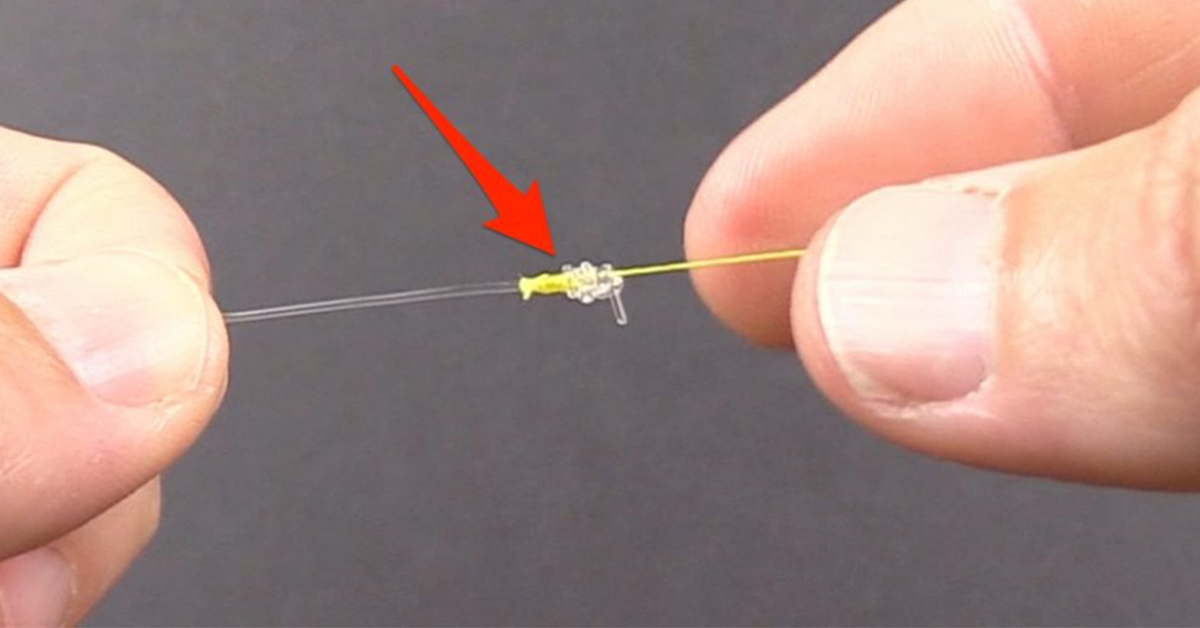
The Uni Knot
Of all the fishing knots out there, the Uni Knot is one that all anglers need to know because it can be effectively used for so many different connections.
Many anglers refer to the Uni Knot as “The most useful fishing knot.”
Not only can it be used for tying directly to hooks and lures (traditional “uni knot”), but it also can be used for connecting two lines together (“double uni knot”)…
And it works on an assortment of different lines and sizes.
So knowing just this one knot, an angler can be ready handle almost all knot needs that come up while fishing.
Its breaking strength has performed well in our knot strength contests while it is surprisingly basic in nature to tie.
And since it’s easy to tie, it’s a fantastic knot for teaching to kids so that they can be ready to tie complete leader assemblies while only having to remember one knot.

This post will show exactly how to tie the Uni knot for the most common two connection needs:
- Line-to-Hook/Lure (known as “Uni Knot”)
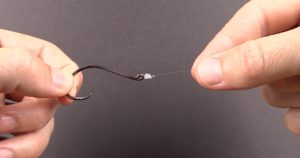
- Line-to-Line (known as “Double Uni Knot”)
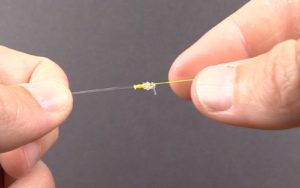
Plus, we’ll cover the simple adjustment needed when tying the Uni knot with braided line.
Important Note: Braided line has a much lower friction coefficient compared to mono/fluoro, so all knots need to be slightly altered to adjust for their lower friction.
Finally, you’ll be able to see a video showing exactly how to tie both connections and you can even download a free single-page guide that you can print out in case needed.
Traditional “Uni Knot”
When tying a hook or a lure to the end of fishing line, there are an absolute ton of options.
And the Uni Knot is a very popular choice because it’s quick to tie while also having a high breaking strength.
The fact that it can be applied to line-to-line connections is an added bonus.
Pros of the Uni Knot
- Quick to tie with high breaking strength
- Can be used on almost all types & sizes of lines
Cons of the Uni Knot
- More bulky than some other options (like the Palomar, Orvis, Davy knots)
- Not quite as strong as the Palomar Knot
Steps to tie the Line-to-Hook/Lure Uni knot:
1. Thread line through hook/lure eye
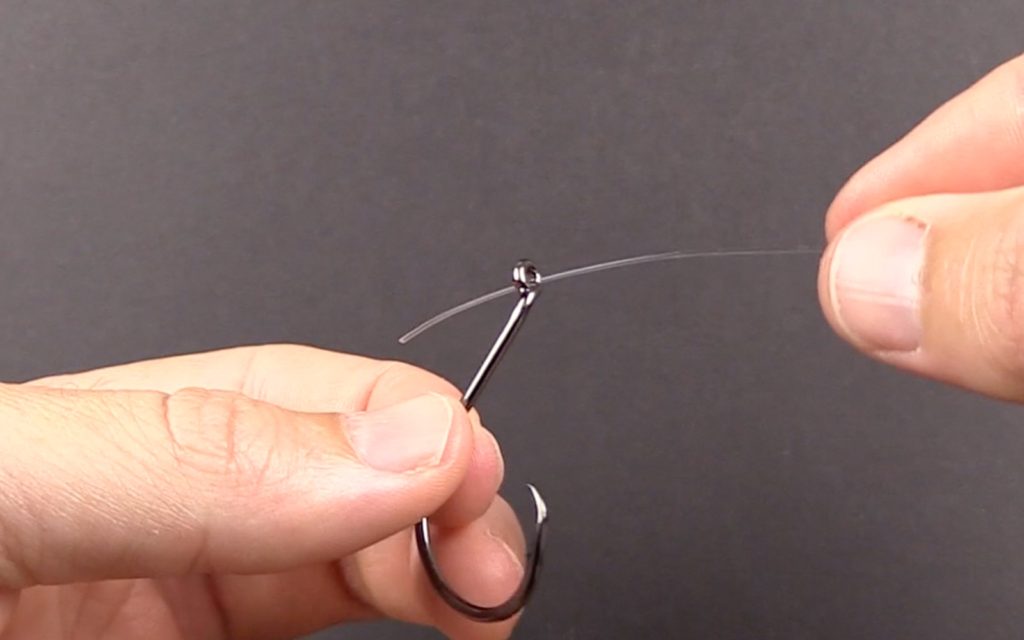
2. Lay ~6 inches of tag end over the main line and pinch lines right above the hook eye
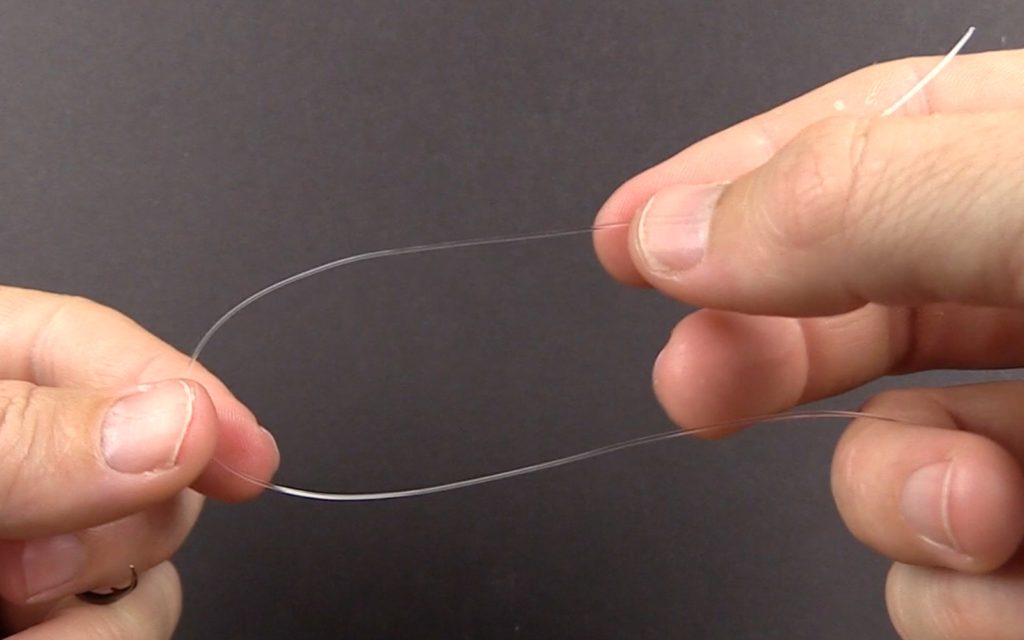
3. Curve tag end around so that it forms a loop in front of the doubled lines leaving its tag end pointing upward
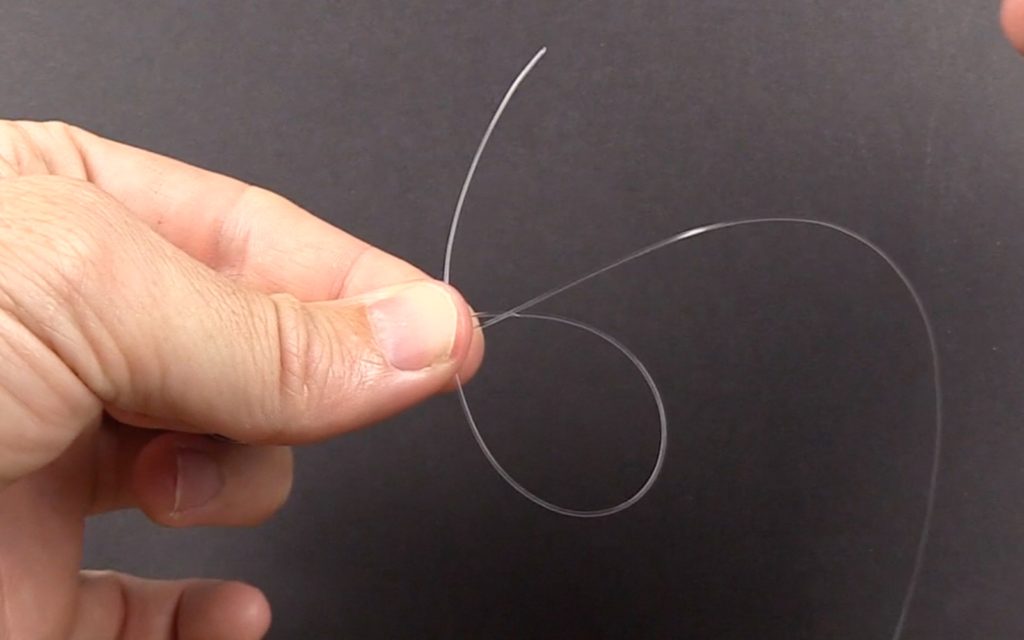
4. Wrap tag end around doubled lines going through the loop in each pass
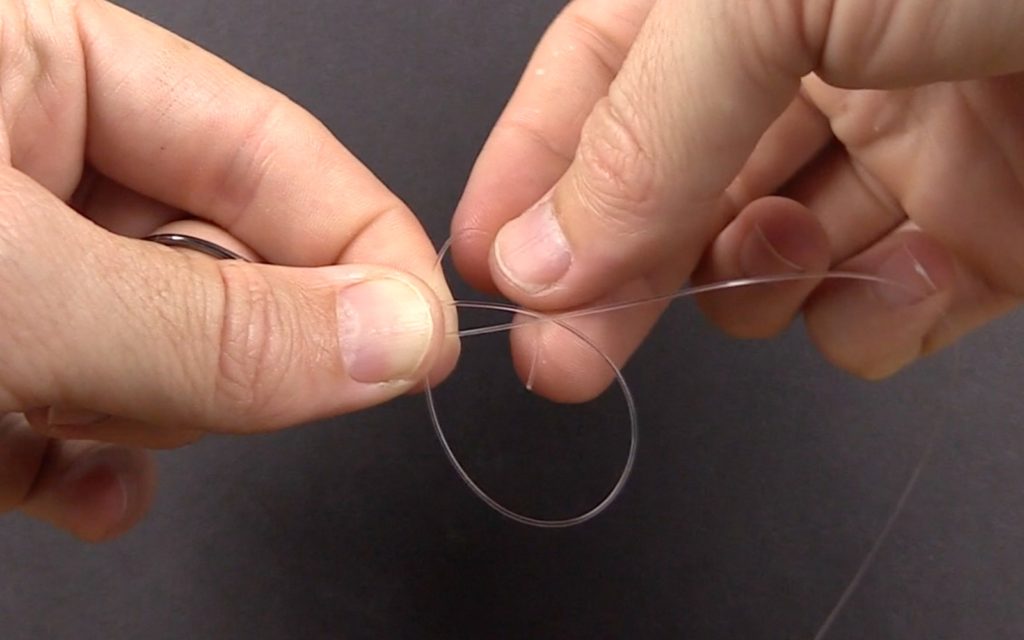
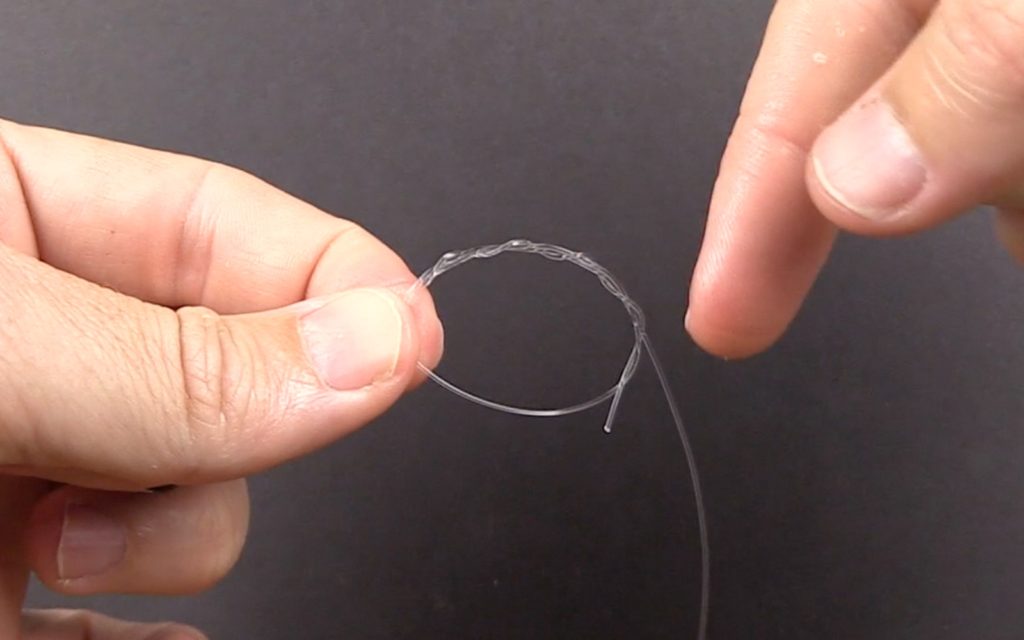
5. Pull on tag until finger tight, and then pull on mainline until knot slides down against hook/lure to lock into place
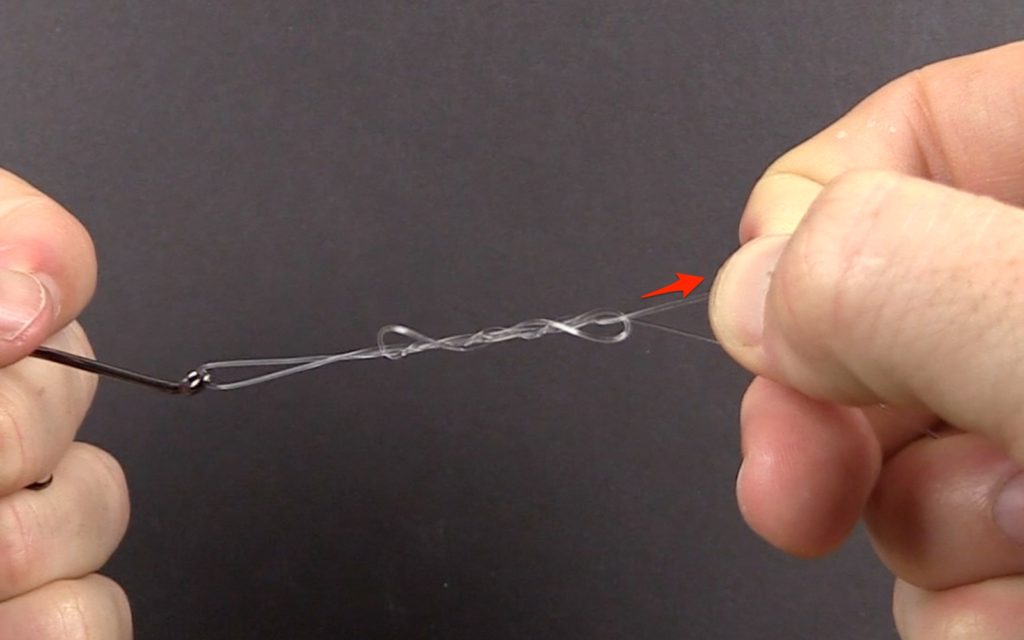
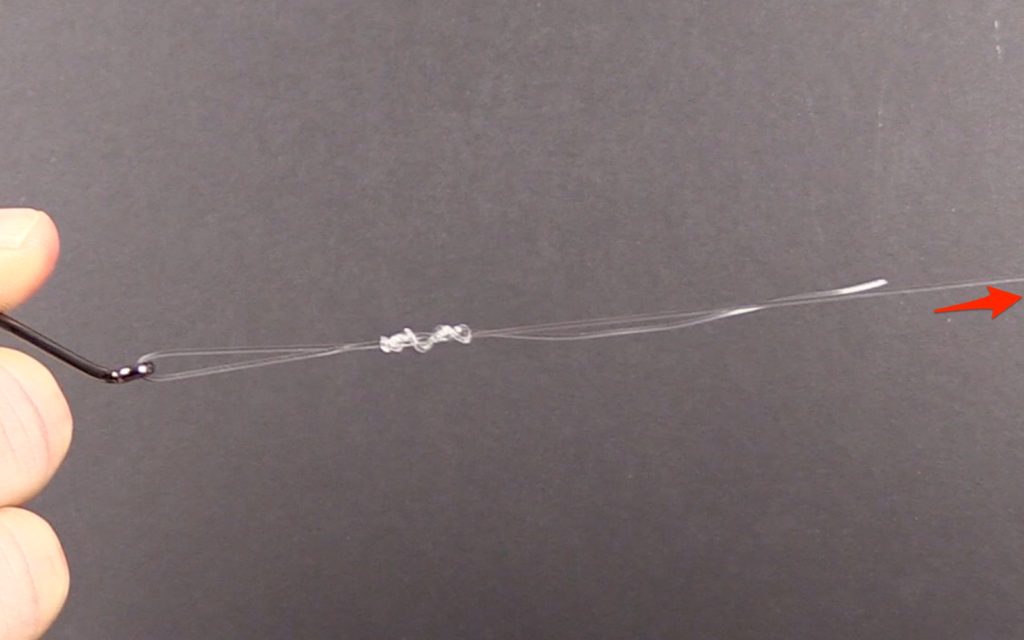
6. Continue pulling until the knot forms directly above the hook

CLICK HERE to get a FREE PDF guide showing all of the essential steps on tying the Uni Knot so that you can have a printout whenever you need it.
Note: Scroll down to see the complete video showing how to tie the Uni Knot.
Double Uni Knot (Line-to-Line)
For saltwater anglers, the most important knot of all is the line-to-line knot used to connect the fishing leader to the main line.
This connection is so important because anglers typically use the lightest line possible on their reel to maximize their casting performance while using a heavier leader to be able to withstand the sharp mouths of the fish that they are targeting.
In many cases, the breaking strength of the leader is twice as strong as the main line, so the line-to-line knot is going to be the weakest link in the system.
And of all the line to line fishing knots, the Double Uni-knot is one of the most popular of all.
Pros of Double Uni Knot
- Quick to tie with high breaking strength
- Can be used to connect almost all types & sizes of lines
Cons of Double Uni Knot
Double Uni Knot Directions
1. Overlap leader and mainline with tags going in opposite directions
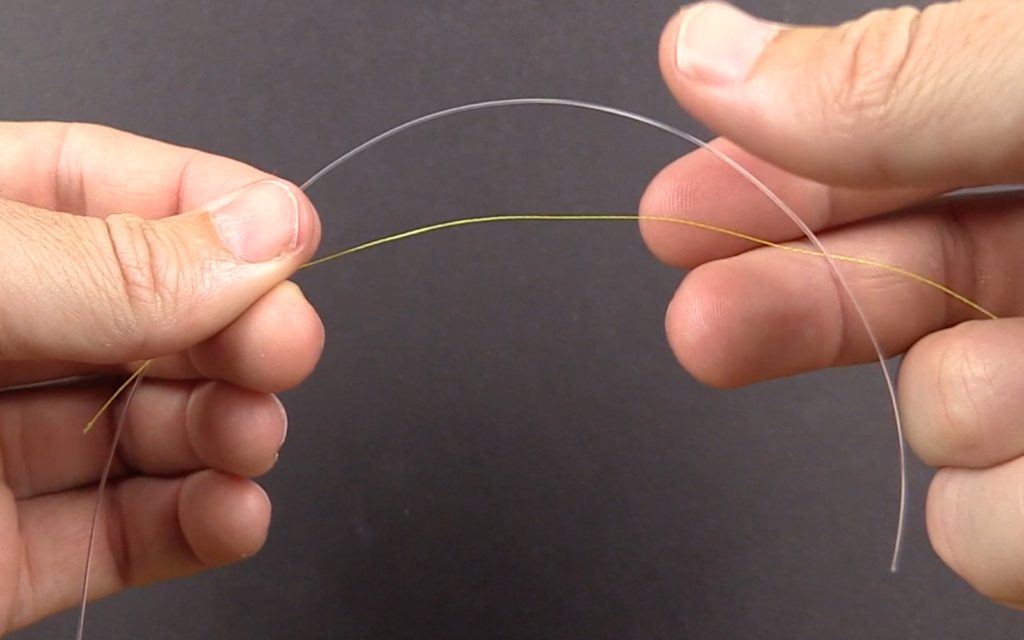
2. Grab onto the midpoint of the overlapped lines with left hand
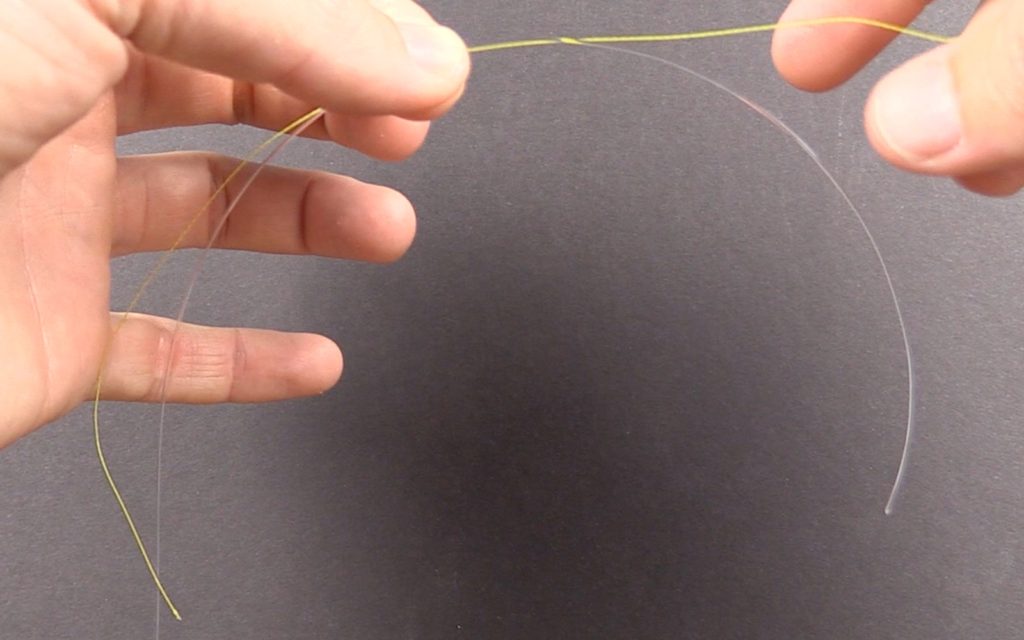
3. Create a loop in mono leaving tag end pointing up
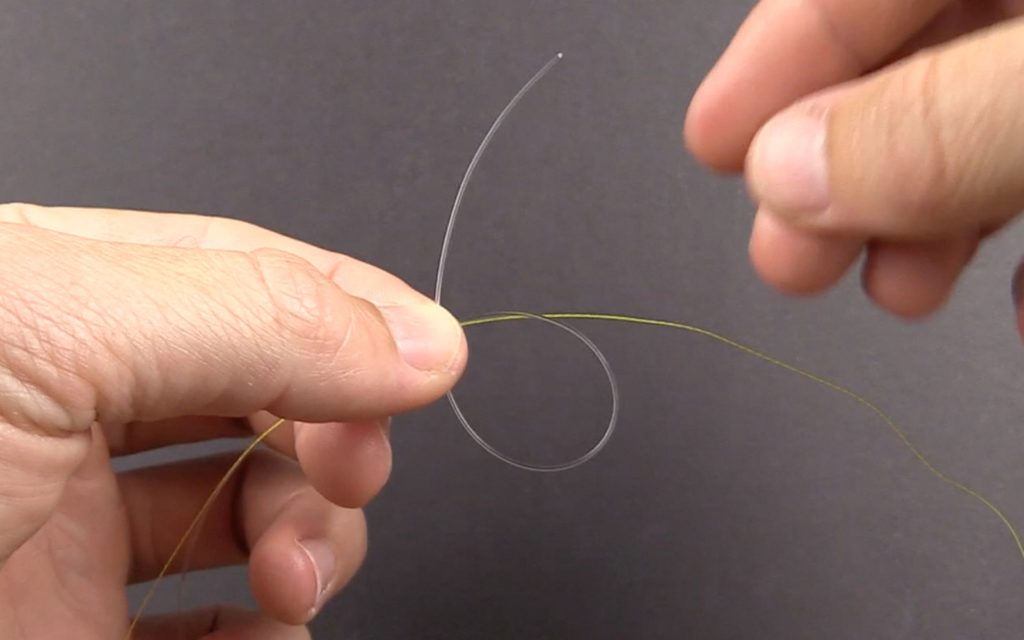
4. Wrap leader tag around the doubled line at the top of the loop (5 x for mono)
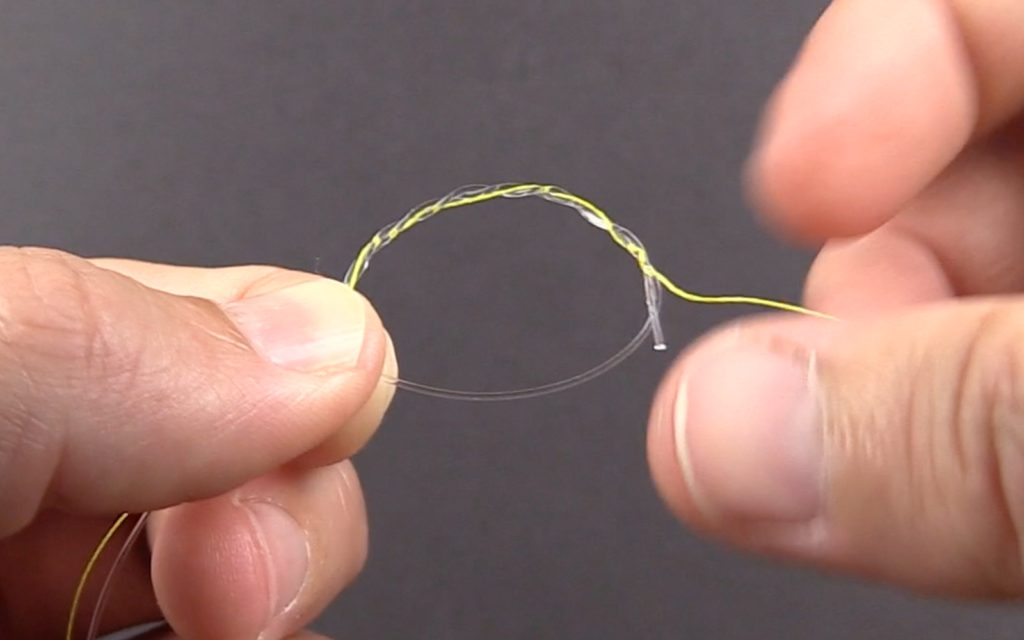
5. Pull on leader lines (main and tag) to tighten down the knot
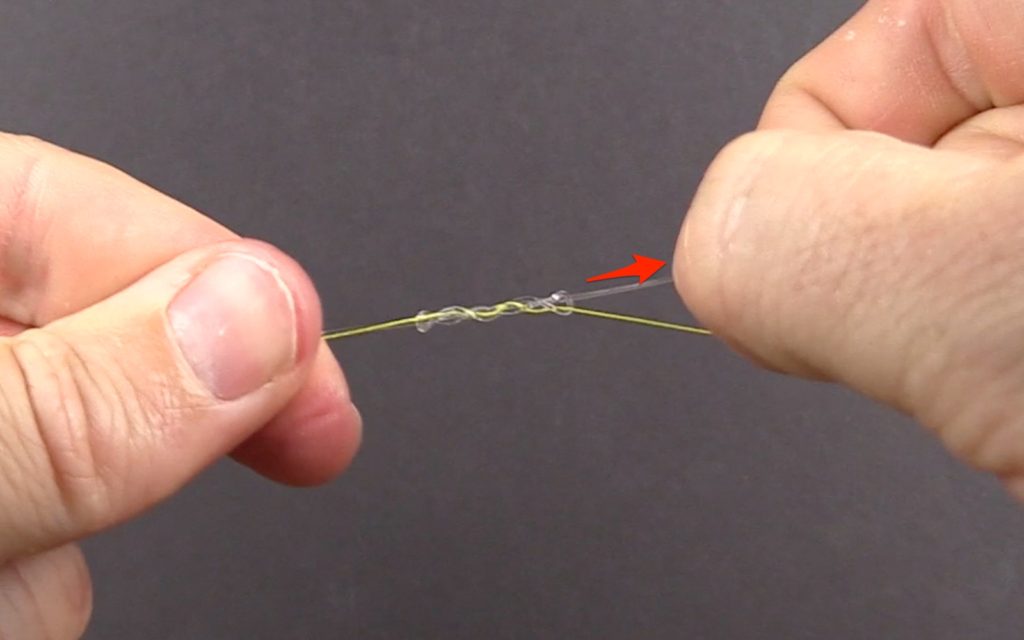
6. Hold cinched knot with your right hand, and then form a loop with the braid similar to step 3 above
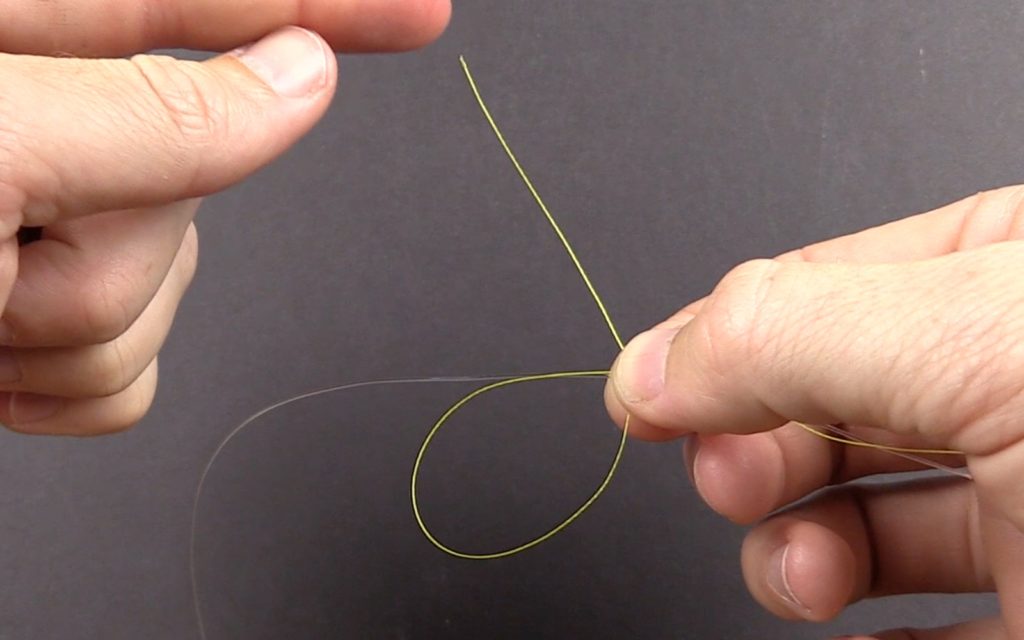
7. Wrap braid tag around the doubled line at the top of the loop (10 x for braid or 5 x for mono/fluoro)
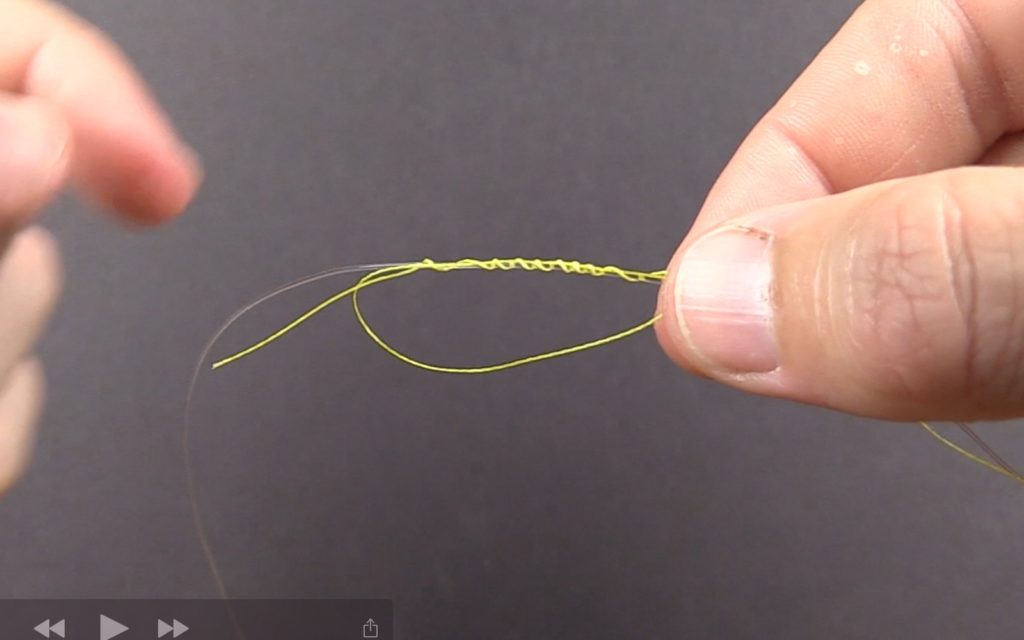
8. Pull on the tag end of the braid to tighten Uni knot coils
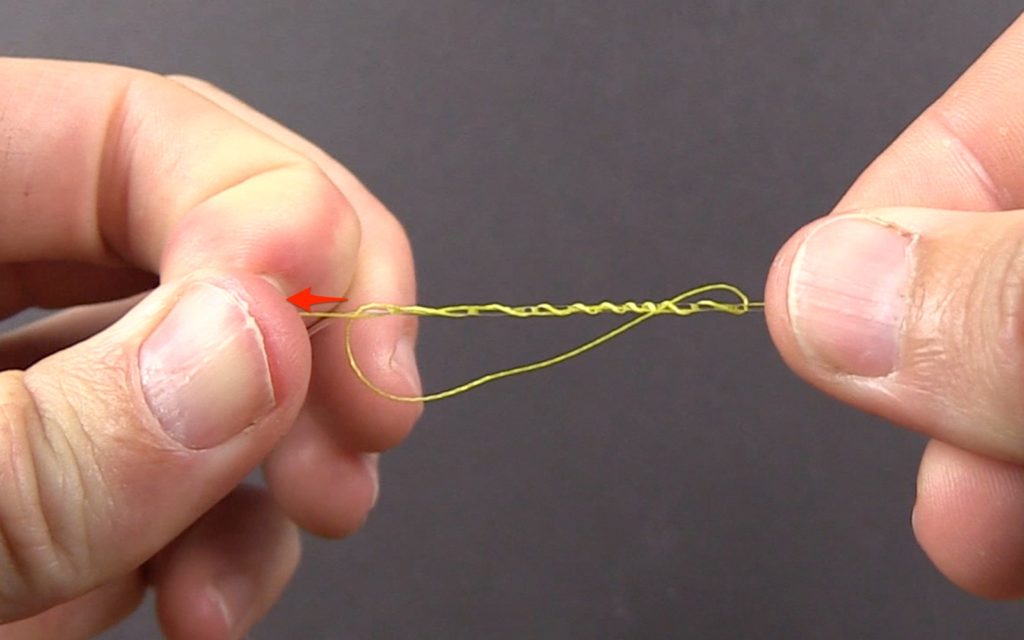
9. Now that both knots are tied and mostly tightened on the line, let go of tags and pull until they slide together
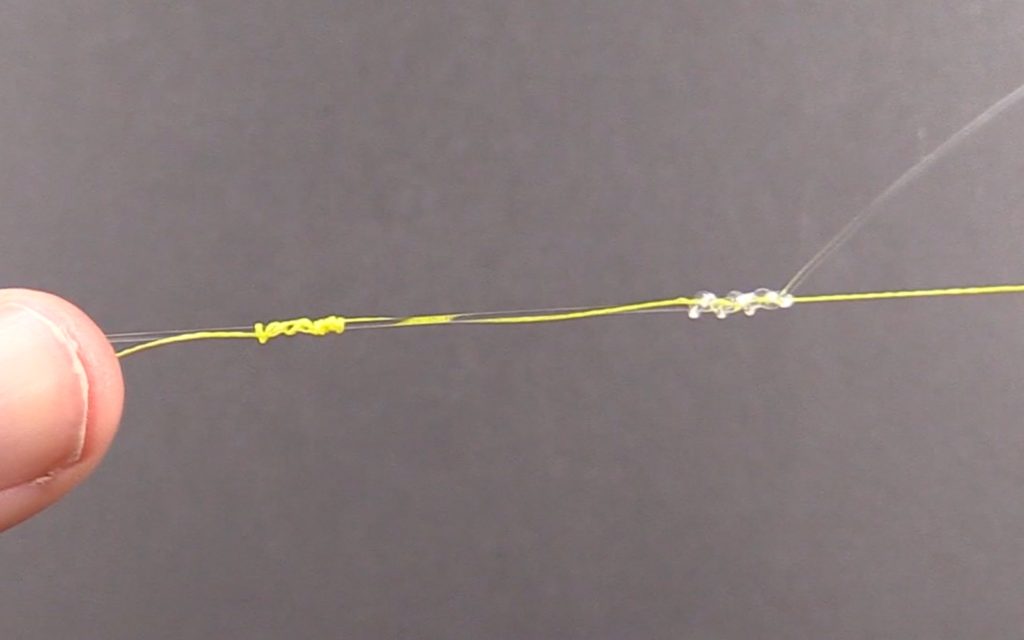
10. Once the knots slide into one another, they’ll tighten up and lock into place forming a strong connection
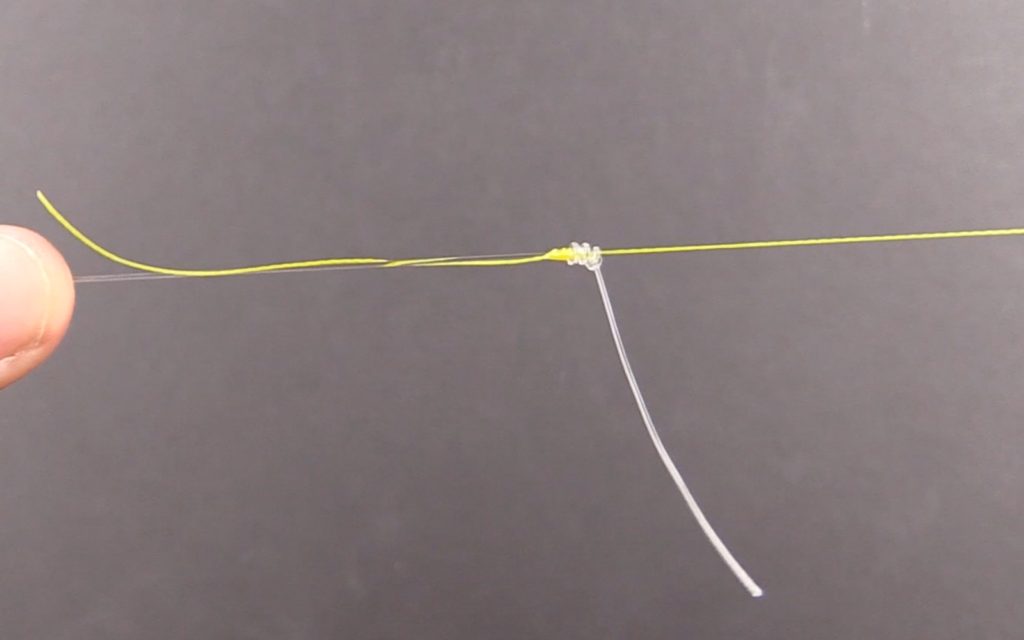
11. Cut of tags and you have a strong line to line connection
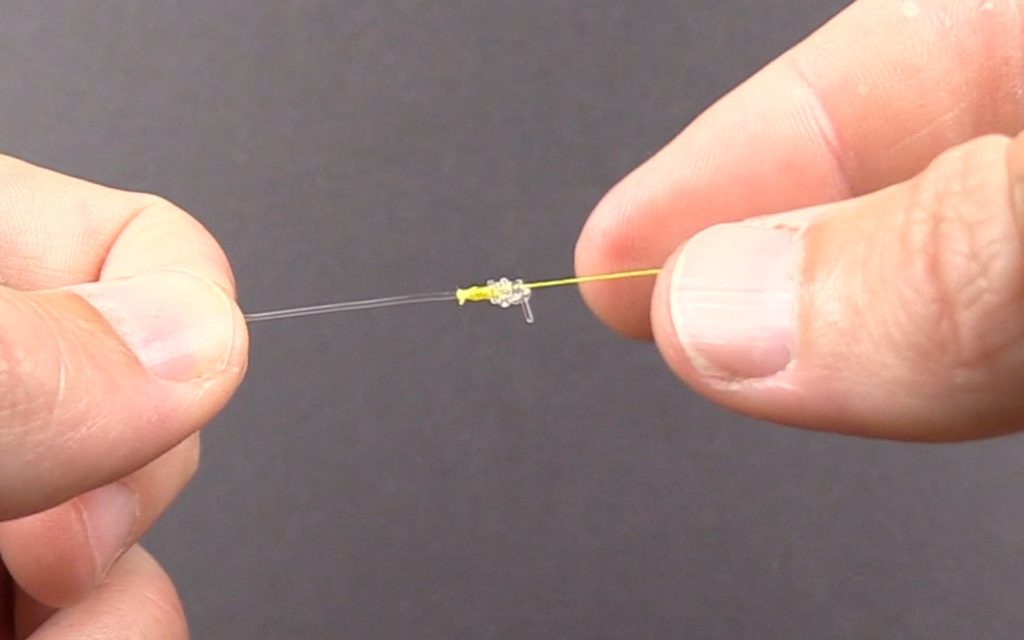

How To Tie The Uni Knot Video
Click below to see exactly how to tie the line to hook and line to line uni knot for completing an entire leader assembly:
The Strongest Uni Knot For Braid
Given how slick fishing line made from braid is, there are some needed adjustments to the Uni Knot that need to be made to make sure you can maximize your knot strength.
This video shows exactly how to tie the uni knot with braid.
Conclusion
The Uni Knot is one of the most popular of all fishing knots given that it is easy to tie, leaves a strong connection for all line types, and can be used for both line-to-hook and line-to-line connections.
So this is a must know knot for anglers of all ages.
And best of all, teaching this knot to a young child can ensure that the child can be ready for almost all knot needs that he or she will face.
What is your favorite fishing knot? Let us know in the comments.
Fish On!
Go To Our Knot Testing Homepage [Full Knot Rankings]
Related categories:
STOP WASTING TIME ON THE WATER!
Do what the “SMART ANGLERS” are doing and join the Insider Club.
Here’s what you’ll receive today when you join:
- Weekly fishing reports and TRENDS revealing exactly where you should fish every trip
- Weekly “spot dissection” videos that walk you through all the best spots in your area
- Exclusive fishing tips from the PROS you can’t find anywhere else
- Everything you need to start catching fish more consistently (regardless if you fish out of a boat, kayak, or land).




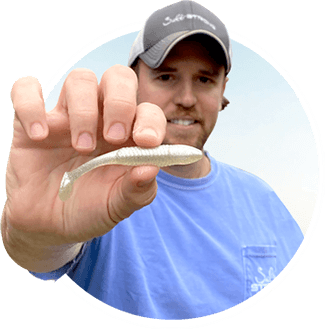
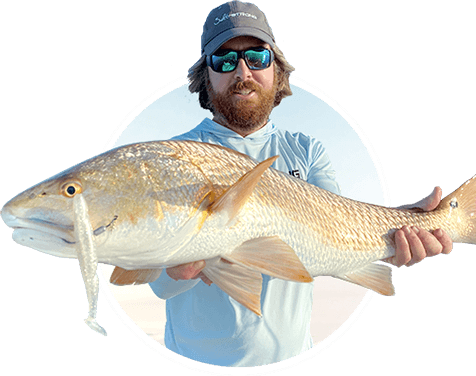
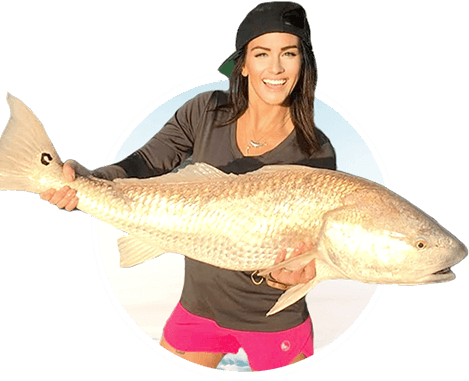
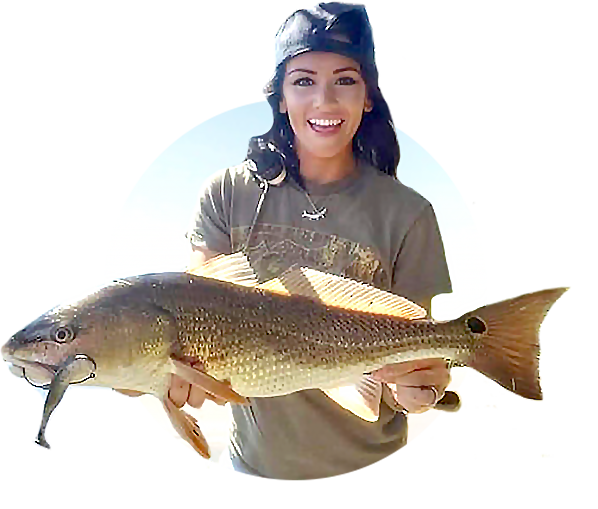
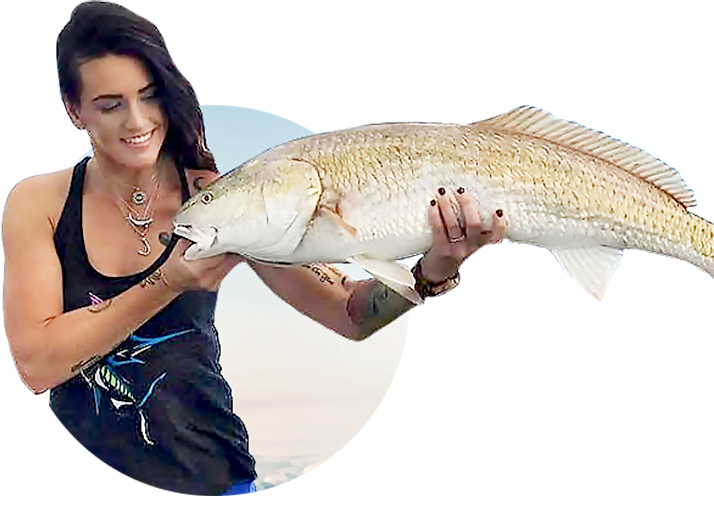

Thank you for the video. I have been Bass fishing for 30 years and have never tied this knot. Going to start practicing.
New member here and past history primarily with Small/Large Mouth Bass. On the double uni with braid video, you are putting the braid right on the hook. What is the reasoning for using a leader at times and tying directly to braid at others? Thanks!
So I have a quick funny story to share. Just joined salt strong the other day. I’ve been watching the videos for a couple of weeks and decided to pull the trigger. Wanted to increase my fishing game and Salt Strong seemed like a legit place to start.
This was kinda cool and a testament to their philosophy of fishing lite tackle and its strength, (which I’m now totally sold on). But it wasn’t a big trophy fish that I hooked…
I was dock fishing out at Captree, Long Island. I was fishing a MH 7’6″ graphite rod with a 3k series spooled with 15 braid. (yes, I now know I can go even lower) and slim shady paddle tail.
There was a strong in-coming tide. I wound up hooking a crab trap with what I estimate to be 15lbs of seaweed entangled in the trap.
The 15lb braid with a 20lb mono leader tied with an FG knot learned from Salt and a Non-slip tied to the lure, actually pulled in a crab trap & seaweed… at least 60’… against an incoming tide… and ONLY broke at the lure knot about 10′ from the dock !!
I’m a newbie and applied the basic principles and philosophies that I only learned from the free YouTube content and its already changed my appreciation.
That wasn’t exactly the story for a PB fish but I can humbly tell you, I went from getting out of my comfort zone and my established fishing habits of extremely heavy line and heavy tackle, to moving to a lighter set up then I never would have guessed I could use and I was thoroughly impressed by that result.
I’m sold. Thanks to Salt Strong and the Simonds brothers. I was only turned on to your content a couple of weeks ago and I’m already impressed with the experience and knowledge I’ve gleemed from just watching your channel. I can’t wait to see what’s actually in the members area.
Thanks for your work guys, you’re doing a special thing here.
Cheers !
-Patrick
Thanks so much for making time to post the nice comment Patrick!
Great step by step tutorial with detailed pictures. Thanks for putting this together.
Also just to note, I went to download the pdf to show the kiddos and saw that the “Click here” link brought me to a 404 Error. Attempted on two browsers to ensure it wasn’t my end. Just wanted to make sure you were aware.
Thanks again!
Interesting… great list of knots… might try some out. Not trying to pick holes, but I’d never (these days) tie a uni like that by just pulling the main line to cinch it down… no lubrication either… I’ll always tie loose, gently drag tag up main line to gently cinch like you, but then lubricate (spit), push / drag the loose knot to the eye and tag- team cinching mainline (hand) and tag (teeth) one after other in short bursts. From through eye to tied its less than 10 seconds, and theres a few little tricks to hold the loop open with your fingers that makes it a breeze to tie in the dark (when you eventually thread the eye!). I find tying this way doesn’t crease / cinch the main line ahead of the knot at all… had breakoffs at the knot before I tweaked this tying method.
Anyway… good list. And take my comment with a grain of salt as you clearly love your knots…. Commenting mainly because I can’t believe a blood knot (“clinch” you call it) beats a uni lol… who knows, maybe it does!…. might have to do some tests myself…
I highly recommend running some experiments yourself because you’ll surely see that many claims about knots are not true. The use of saliva on knots is another test that shocked me… here’s a link in case interested: https://saltstrongdev.wpengine.com/articles/saliva-cinch-down-fishing-knot/
I noticed that on tying the uni knot that you used an offset circle hook. I read from FWC that it’s best to use a non offset hook. What are your thoughts?
Luke, when attaching the leader to the braid line, what are your thoughts of using the double uni-knot vs. the surgeons knot?
Neither of those knots are stronger or thinner than the FG knot, so I now stick with the FG. But between those two, I’d trust the Double Uni over the Surgeon because the surgeons knot can be tough to cinch down with both lines getting equal pressure when connecting braid to leader.
Thank you!
I use a similar knot, but substituting a double (for heavier mono) or triple fisherman’s knot for the mono (double for heavier mono, triple for lighter). It is essentially a snell knot tied by making 2 loops around the line going toward the braid and passing the line through the loops. That way the tag points backwards, making a tapered knot the casts very well But the FG knot looks like it may cast even better, though it’s much more complicated to tie.
Use Loop Knot for Lures
Uni Knot and Double Uni Knot